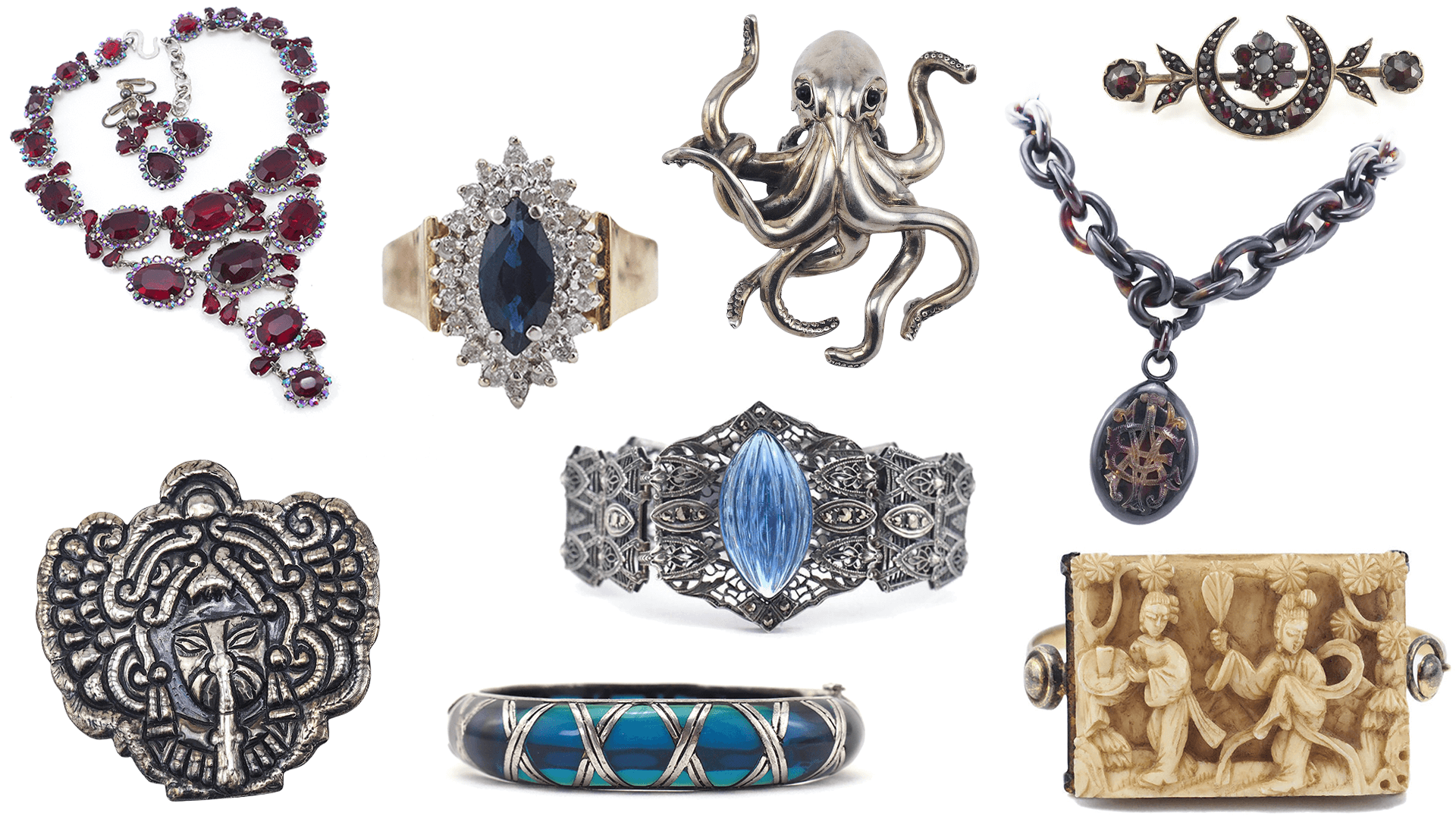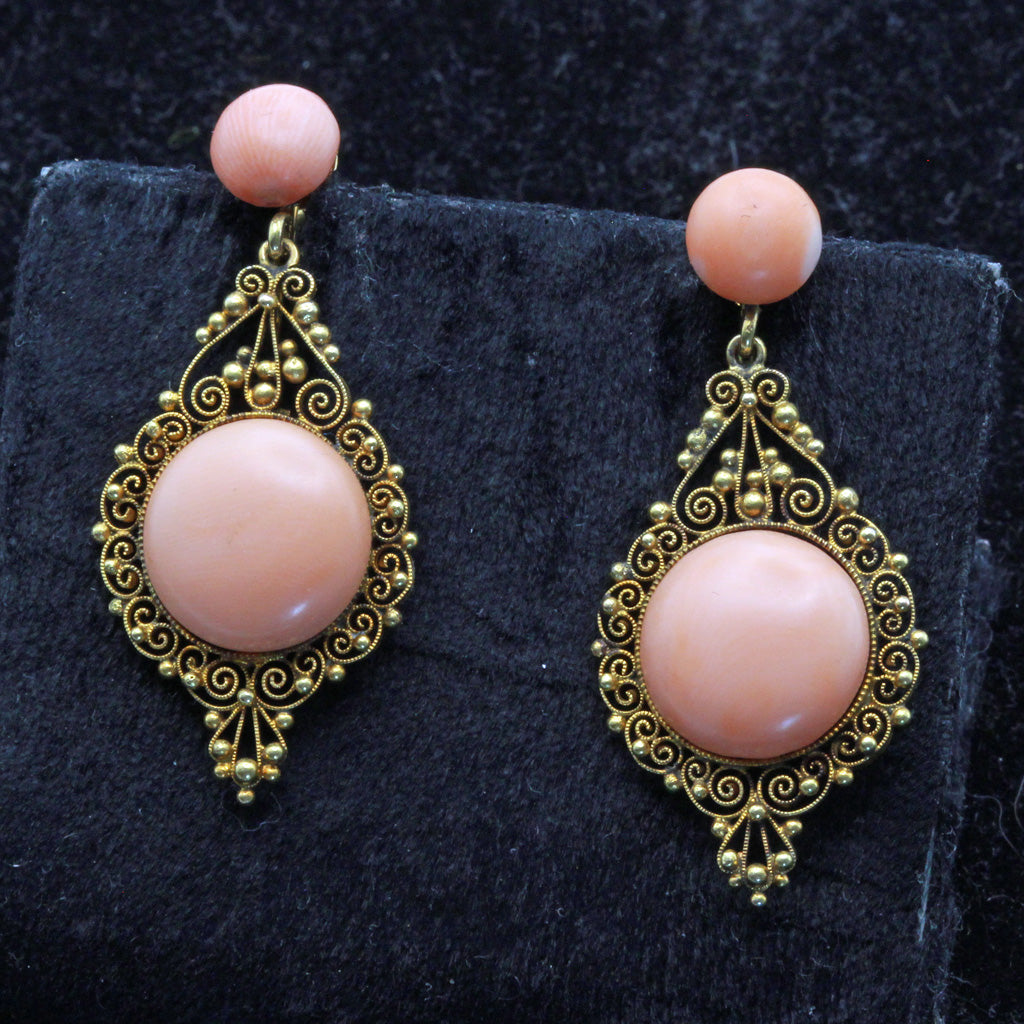Find high-end antique jewelry austin for collectors.
Revealing the Attraction of Antique Fashion Jewelry: Understanding Its Different Designs
Antique jewelry serves as an exciting window into the past, providing understandings right into the cultural and creative nuances of numerous eras. Each design, from the emotive details of Victorian precious jewelry to the liquid elegance of Art Nouveau, envelops the sentiments and advancements of its time. The succeeding luxury of Edwardian layouts and the striking types of Art Deco even more show this development. Yet, as we explore these distinctive designs, one need to consider how the importance of these pieces transcends mere looks, inviting a much deeper exam of their historical and psychological resonance.
Victorian Age Fashion Jewelry
The appeal of Victorian Age precious jewelry depends on its complex craftsmanship and profound significance, mirroring the social values and psychological currents of the moment. Extending from 1837 to 1901, this period was identified by an attraction with nature, mourning, and romanticism, which greatly influenced jewelry design. Precious jewelry items typically featured elaborate themes, such as flowers, animals, and intricate lacework work, crafted from materials like gold, silver, and gems.

Additionally, the technological advancements of the Industrial Transformation permitted more detailed layouts and making use of new materials, such as rubies and pearls. This democratization of high-end made fashion jewelry a lot more obtainable to the middle class, causing a spreading of diverse styles. Overall, Victorian Era precious jewelry continues to be a fascinating testament to the intricate interplay of art, emotion, and societal norms throughout a transformative historic period.
Art Nouveau Creations
Defined by its organic kinds and flowing lines, Art Nouveau fashion jewelry emerged in the late 19th and very early 20th centuries as a reaction to the mass manufacturing and stiff designs of the coming before periods. This imaginative motion sought to welcome nature, incorporating components such as flowers, leaves, and vines into the designs. Art Nouveau items commonly included unbalanced compositions, stressing a sense of movement and fluidity.

Making use of cutting-edge methods, such as enameling and the unification of glass, additional distinguished Art Nouveau jewelry from its precursors. The motion inevitably celebrated individuality and imaginative expression, making each piece a distinct artwork. Because of this, Art Nouveau creations continue to astound collection agencies today, symbolizing a distinct mix of beauty and nature that stays classic.
Edwardian Duration Parts
Throughout the early 20th century, the have a peek at these guys Edwardian duration saw an amazing advancement in jewelry layout, marked by a focus on sophistication and opulence. This era, called after King Edward VII, extended from 1901 to 1910 and is defined by the complex craftsmanship and fragile looks that specify its pieces.
Fashion jewelry from this period typically includes platinum settings, a product that enabled for finer and even more detailed layouts, improving the play of light versus the treasures. Using rubies was widespread, commonly set up in sophisticated concepts such as filigree and floral patterns. Edwardian fashion jewelry likewise accepted using pearls, which included a soft, luminous quality to the pieces.
Breastpins, lockets, and earrings became noticeable, showcasing the period's fondness for romantic and wayward layouts. The "garland style," which entailed using ribbon-like themes, was specifically popular, mirroring the naturalistic impacts of the moment. Furthermore, items frequently bundled tinted gemstones to produce striking contrasts, more boosting their aesthetic charm. Generally, Edwardian duration precious jewelry stays a testimony to a time when artistry and sophistication ruled supreme worldwide of adornment.

Art Deco Layouts
Emerging in the 1920s and flourishing with the 1930s, Art Deco creates stand for a strong separation from the elaborate styles of previous eras, accepting geometric shapes, streamlined kinds, and lively shades. Defined by a feeling of modernity, this layout movement drew ideas from numerous sources, consisting of cubism, ancient Egyptian motifs, and the vibrant appearances of the device age.
Art Deco jewelry typically includes bold contrasts, incorporating products such as platinum, gold, and tinted gems to develop striking aesthetic results. Making use of intricate patterns and concepts, including zigzags, chevrons, and flower elements, showcases the craftsmanship of the moment. Notably, the period likewise saw the introduction of brand-new strategies such as enamel job and making use of antique engagement rings austin synthetic stones, expanding the possibilities for creative expression.
Parts from this period often radiate glamour and class, making them highly demanded by enthusiasts and fanatics alike. Art Deco fashion jewelry offers not only as a reflection of its time but likewise as a testament to the long-lasting allure of its cutting-edge styles. Therefore, it holds a significant place in the background of antique precious jewelry, commemorated for its distinct style and social value.
Retro and Mid-Century Styles
Retro and Mid-Century designs, extending from the 1940s to the 1960s, represent a vibrant duration in fashion jewelry design that mirrors the optimism and innovation of post-war society. antique rings austin. Defined by vibrant styles and making use of innovative materials, this era saw a separation from the detailed detailing of previous styles, embracing instead an extra playful and abundant aesthetic
Fashion jewelry from this period frequently includes big, colorful gemstones, consisting of citrine, aquamarine, and tourmaline, established in yellow gold-- a material that obtained prestige because of its cozy tones and malleability. The layouts regularly incorporated whimsical motifs such as floral patterns, abstract forms, and geometric forms, recording the spirit of modernity and liberty that defined the age.
Significant designers like Cartier and Van Cleef & Arpels made significant contributions to Retro and Mid-Century styles, creating items that integrated workmanship with artistic panache. The impact of Hollywood appeal during this time led to a raised demand for statement fashion jewelry, making it a vital device for the trendy elite. Collecting Retro and Mid-Century precious jewelry today uses enthusiasts a glance into a transformative duration in history, defined by creative thinking and social development
Conclusion
The expedition of antique jewelry exposes a dynamic spectrum of designs, each embodying the cultural and artistic subtleties of its respective age. From this hyperlink the emotional deepness of Victorian designs to the innovative spirit of Retro items, these artifacts work as important historic stories. Recognizing the distinct characteristics of each duration boosts appreciation for the workmanship and importance behind these adornments, solidifying their standing as not only decorative products but likewise beneficial connections to the past.